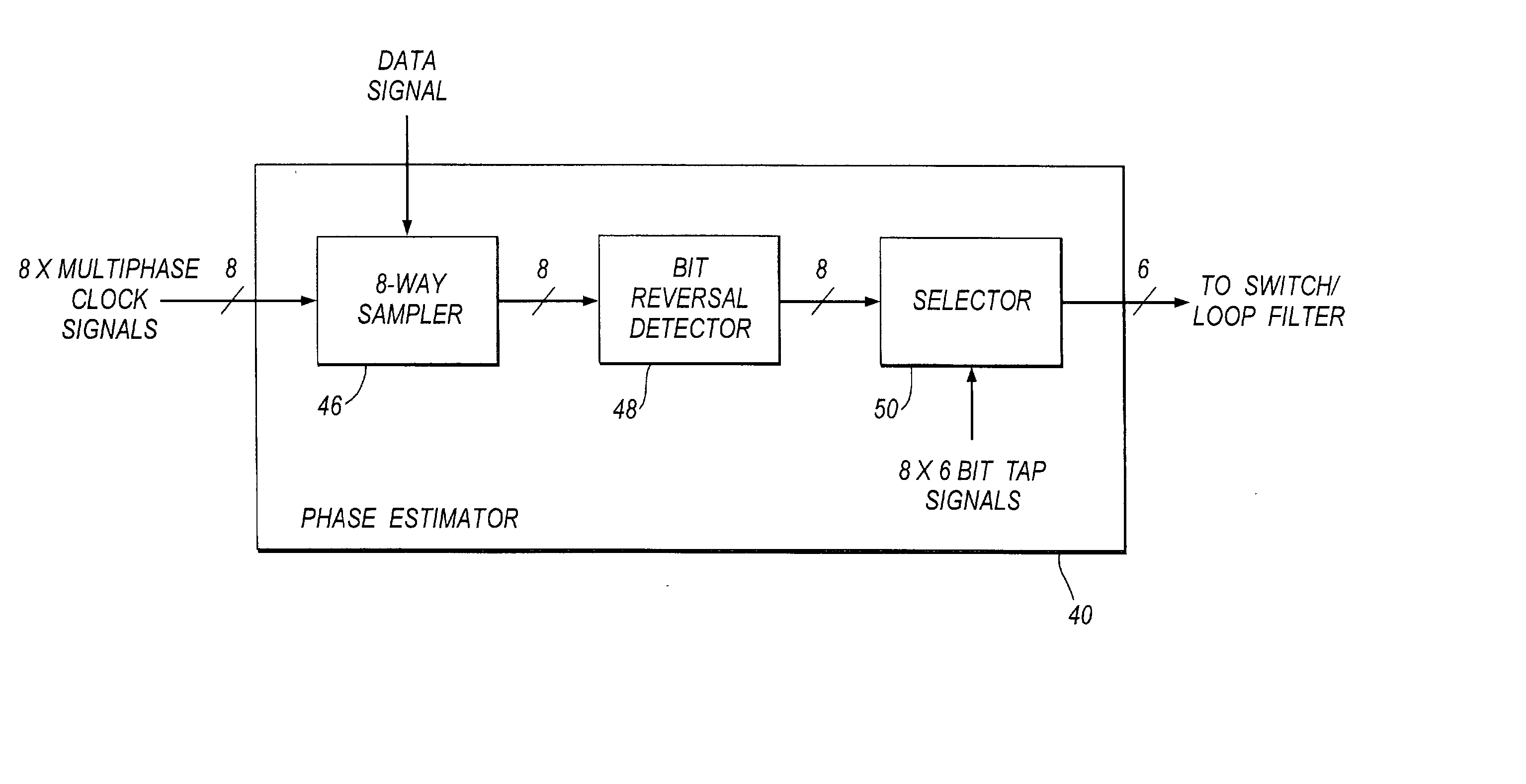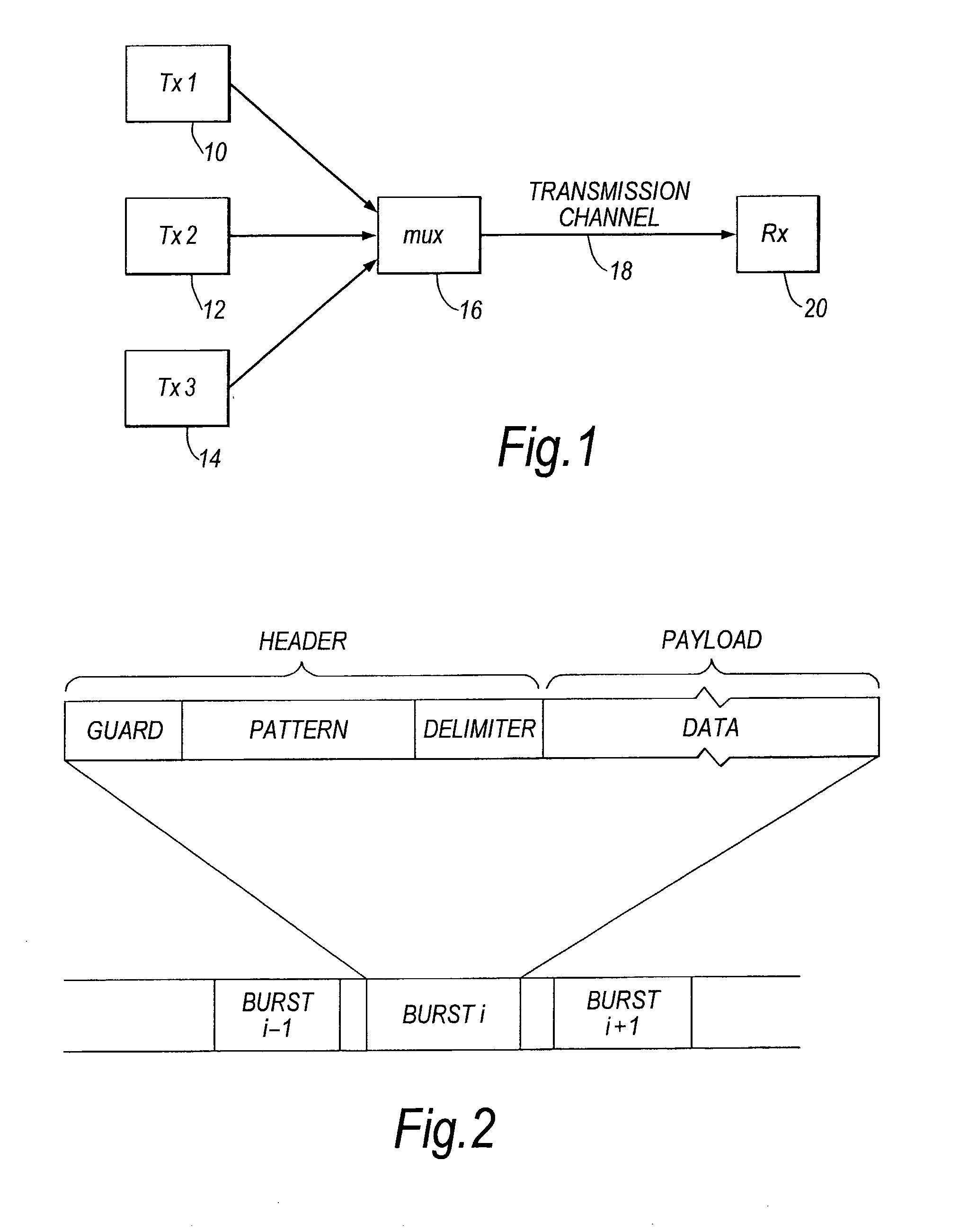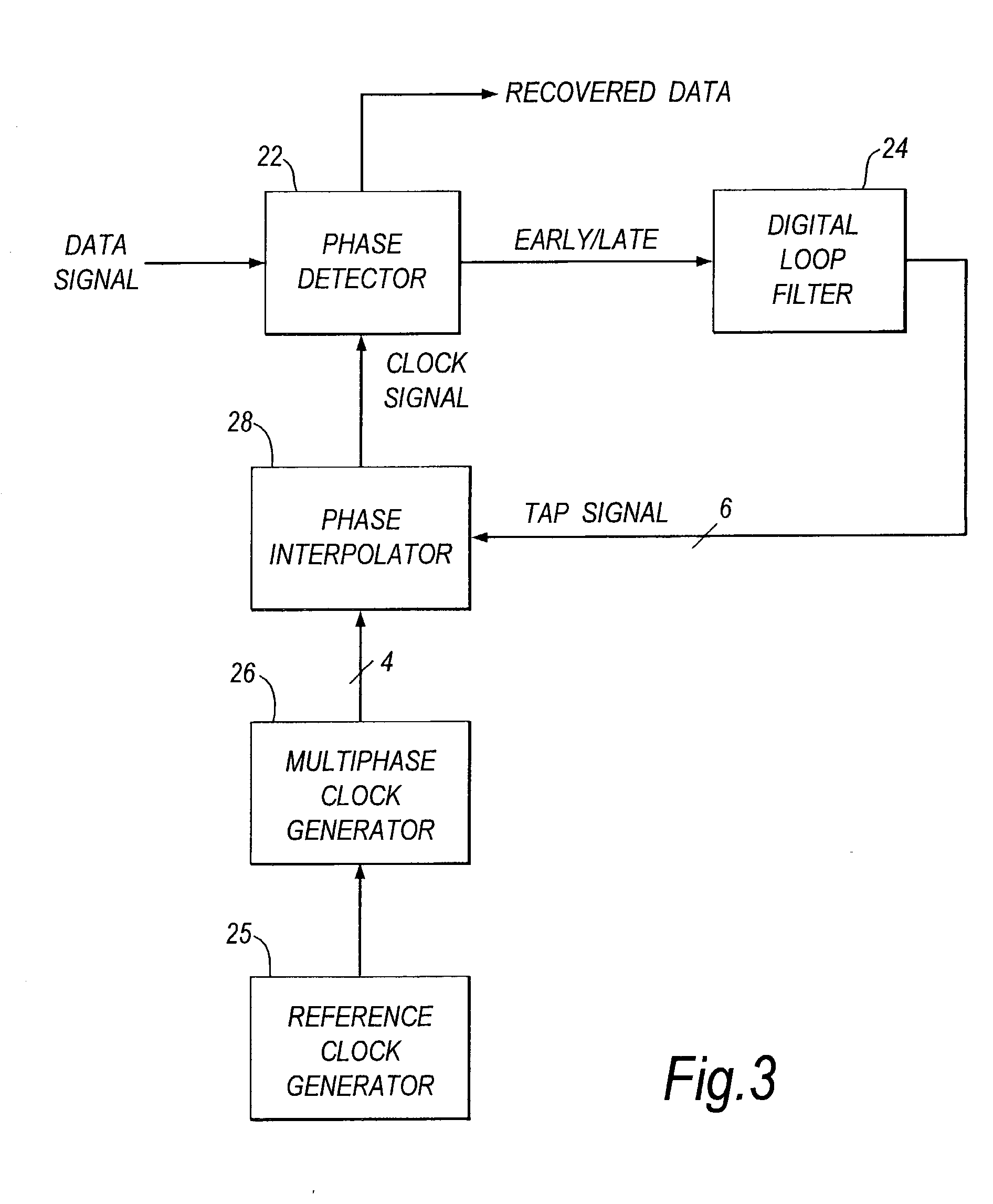Clock recovery circuitry
a clock recovery and circuit technology, applied in the field of clock recovery circuitry, can solve the problems of increasing the jitter of the recovered clock signal, requiring many clock cycles for the phased locking loop to lock onto the data, and a relatively large proportion of the total transmission time being used for clock recovery
- Summary
- Abstract
- Description
- Claims
- Application Information
AI Technical Summary
Problems solved by technology
Method used
Image
Examples
Embodiment Construction
[0046] FIG. 1 shows parts of an example communications system with which the present invention may be used. In FIG. 1, three transmitters 10, 12, 14 each transmits a serial data signal. The transmitters operate on a time division multiplex basis, with each transmitter being allocated a window in which it may transmit a burst of data. The various data signals are combined in multiplexer 16, transmitted over transmission channel 18, and received by receiver 20.
[0047] The transmitters 10, 12, 14 are arranged such that each transmitter transmits a data signal at the same frequency as the other transmitters. However, due to differences in path length between the transmitters and the receiver, each data signal is received by the receiver with a difference phase. In the receiver, a clock and data recovery (CDR) circuit is provided, which recovers a clock signal from each data burst, and uses the clock signal to recover the data.
[0048] FIG. 2 shows an example of the format of the data burst...
PUM
 Login to View More
Login to View More Abstract
Description
Claims
Application Information
 Login to View More
Login to View More - R&D
- Intellectual Property
- Life Sciences
- Materials
- Tech Scout
- Unparalleled Data Quality
- Higher Quality Content
- 60% Fewer Hallucinations
Browse by: Latest US Patents, China's latest patents, Technical Efficacy Thesaurus, Application Domain, Technology Topic, Popular Technical Reports.
© 2025 PatSnap. All rights reserved.Legal|Privacy policy|Modern Slavery Act Transparency Statement|Sitemap|About US| Contact US: help@patsnap.com



